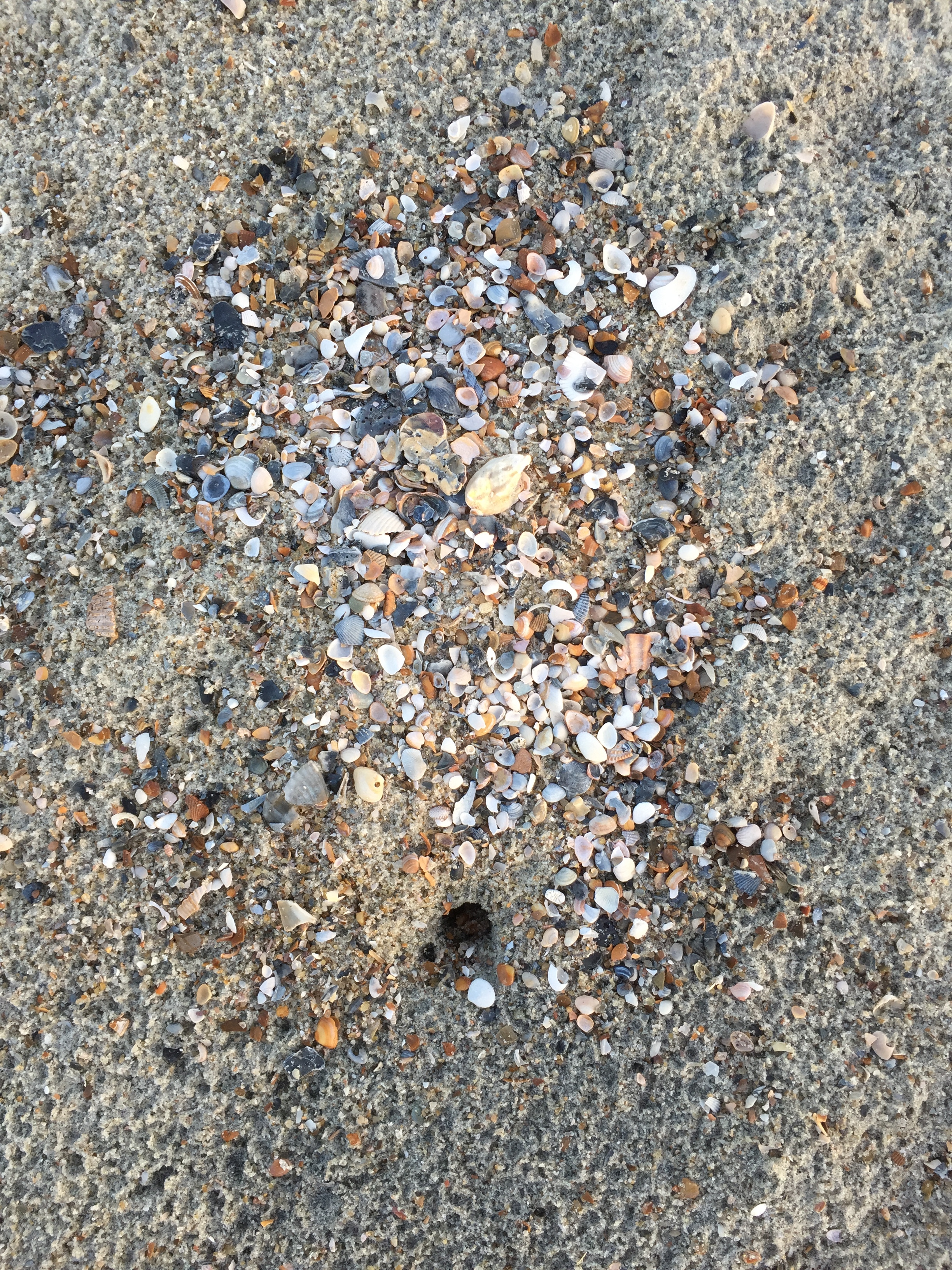Surf Lessons
/Beachcombing is one of the simplest of island pleasures; the focused meandering helps you release whatever might be on your mind—a sort of hypnosis, along with the sound of the waves and wind. What will fall before your feet can’t be predicted, whether seashells or driftwood or the random manmade items that wash ashore: sunglasses, flasks, lures, small toys. Optimistic souls with metal detectors hope for more, particularly after storm surges pound the sand. A shipwreck’s dubloons could be unearthed, or more mundane bounties of gold rings, slipped from fingers in the surf, might be found. On Captiva Island, shell scoops were designed to sift for valuable varieties in the feet-thick banks of shells. My mother used to say that my bottom was the most tanned part of my body; I was forever bent over looking for treasure.
When I first moved to Tybee Island, my collector’s instinct kicked in—I compulsively picked up every perfect shell in my line of sight. I finally figured out that this drive to possess was not what island life was about, although it wasn’t until one sleepless night when I stayed up organizing lettered olives, sanddollars and whelks in vintage mason jars that this acquisitive-cum-avaricious problem became clear. I had so many shells at that point that I took some with me on my walks to swap with people who were whisking live creatures away. It’s more pleasant to be out with your feet in the surf and the sun on your face once you stop trying to own nature. That said, every now and then something crosses your path that you can’t ignore.
Sandy West tells the story of how in the 1970s, when she was battling the State of Georgia over the terms of the sale of Ossabaw, the wild barrier island her parents had purchased for their winter home in 1924, she walked the beach to clear her head and found a small plastic boxing glove. For her, and others before and since, meaning was gleaned from what the waves tossed onto her path—it gave her renewed vigor for the fight. In a “What are the odds?” moment 50 years later, during another series of confrontations with the State to preserve what had been agreed upon a half century before, she found an identical plastic boxing glove on another of the island’s beaches—the same save the color—and again her strength was bolstered. She keeps them both in a fabric bag on her bedpost as a reminder.
I had similar experiences on Tybee. A longago love sent word of his first-born son’s arrival; I wanted to create something beautiful for his child, for him, and looked at two tiny green sea urchin shells I’d found on the beach near his home in Africa, at the confluence of the Indian and Atlantic oceans. But I hesitated to use them in the wrapping design. I loved these shells, so beautiful, so fragile; I struggled with surrendering them. I realized I was still feeling the loss of him, of the life we might have had. I headed to the water to get away from the quandary, only to find two perfect purple urchin shells at the North End jetty, side by side—shells I’d never seen in years of living there—not broken, not whole, and certainly not in pairs. It was the island’s version of “There are more fish in the sea.”
At times the surf’s offerings fill you with delight—hundreds of purple starfish—or are entertaining with no life lesson proferred beyond “Lighten up!” I got a good laugh from a naked doll frozen in a beauty pageant wave, while a friend on Key West found “Jesus” in plastic lettering. Islands are more than mere land masses, they’re entities of a fashion: they have a saltwater pulse, and their own intelligence and language. There’s a spirit to them that interacts in ways you can’t anticipate, but that lingers long after you’ve left their shores.
—Anna Marlis Burgard










